When push comes to shove, or when grading takes over, everything, including my writing, tends to fall away. In the fall (pun not intended), my writing had faltered due to grad school applications. In spring, it was the hundreds of student stories I reviewed every month, in preparation of fiction writing workshops.
Of course, I was so happy and proud of my students’ dedication to their work, how they wanted MORE work, MORE writing, and how they even added themselves to MORE workshops despite how I only required them to do ONE. For a reason.
My sanity.
One of my goals teaching at a Romanian University was to discover a gap I could fulfill; something I could bring to the table that no one else could. I quickly learned that Romanian Universities do not offer Creative Writing classes. Since I had done my Masters in English-Creative Writing, this was my gap. The students were excited at the challenge of doing something most hadn’t done since primary school, something incredibly different than their literature and grammar courses.
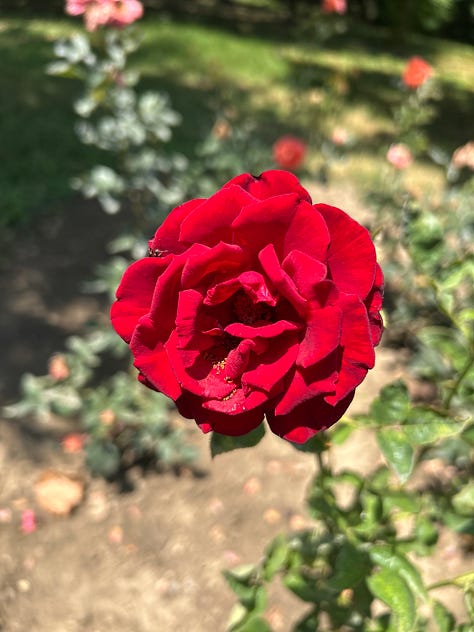
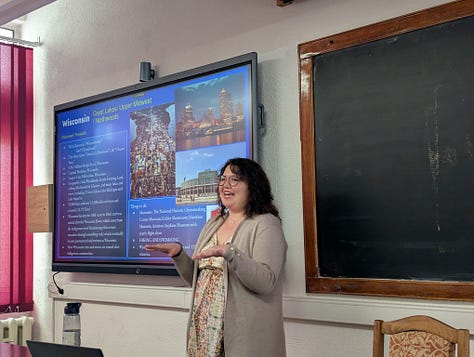
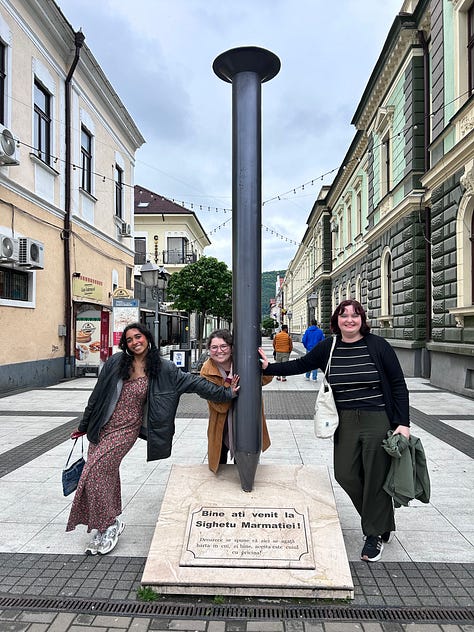
Besides creative writing being my primary discipline, there were other reasons I thought teaching Creative Writing in Romania would best accomplish not only my goals as a professor, but also the goals of Fulbright and the university. They wanted me to help my students with their English; to teach them about the United States; and to learn from a native English speaker. I was told repeatedly it didn’t matter what I taught them, as long as I spoke to them. I could create whatever course I desired, and I had the full support of the faculty.
Writing stories would 1) force students to think about story structure and figurative language in English, so they knew not only what to look out for in their literature classes but also increase their skills in literary and craft analysis. 2) Practice spoken English by writing realistic dialogue 3) Use English to provide constructive criticism to their peers and invest in feedback (enhancing critical thinking and communication skills). 4) Use spoken English to participate in class discussions and presentations. 5) Give students valuable written feedback on their writing, another gap I was willing to fulfill, given how overloaded the other professors were. 6) Encourage students to use the skills they learn to become better translators of Romanian Literature. 7) Leave the students with transferable skills they could take with them to not just their other classes, but also to their lives and jobs outside of university.
In addition, I included flash fiction and poems from various American and International authors, taught about the history of publishing in America (2nd semester), and forced them to revise and think about not just what they’re writing but WHY they’re writing it, and HOW they can engage a reader through their writing, a pedagogical technique called Metacognition that I learned as an undergraduate writing tutor and that I’ve continued to implement since.
FIRST Mistake.
There were learning curves to teaching creative writing in Romania. The Romanian University system is different than the American system. Instead of grading on a ABC scale, Romanians grade on a 1-10 scale, 5 being a passing grade for any course. In addition, instead of teaching three 50 min or two 75 min class a week for 16 weeks, I’d be teaching one 100-minute seminar class once a week, every other week for 14 weeks; meaning: I’d only have seven classes with each section of students throughout the semester. Fall semester I had 5 sections of Creative Writing and 1 section of Intercultural Communication; six classes with a total of 157 students. In spring, I combined one class of 1st years and replaced Intercultural Communication with another creative writing course for third year students, bringing my students up to 175, and my classes down to five. Although I’d been trying to decrease my workload by cutting down to five classes, I somehow ended up INCREASING it. Now, I had 5-10 absent students in each class—but on average I had classes of 20-30 students a class period, whereas a typical Creative Writing class at the American undergraduate level would consist of 10-12, maybe 15 students max. This, as one could imagine, created some problems…
SECOND Mistake.
I tried to address this increased class size by creating workshops of 12 students max. However, I left it to the students to sign up. And instead of keeping to my 12 a day, (in second semester, I put three workshop days into the 7-class schedule. In Fall I only had one), they instead added themselves to days, creating workshop days where we’d have to get through 20 student stories. In a class that would meet twice a week, an average workshop would have 3 students per class workshop, three workshops for each student throughout the semester. To say that 20 students was too much would be the understatement of the century.
THIRD Mistake.
I assumed that I should cram an entire semester’s worth of material into these seven classes. Why? I had too many learning goals, and I wanted to accomplish all of them. Since I didn’t know who or what I’d be teaching initially, it didn’t occur to me that I could split a single class between the two semesters, since I didn’t know if I’d have the same group of students. The thing about Romanian Universities is that they plan things VERY last minute in comparison to American Universities, and their style of communication is different too. This is something I had to learn.
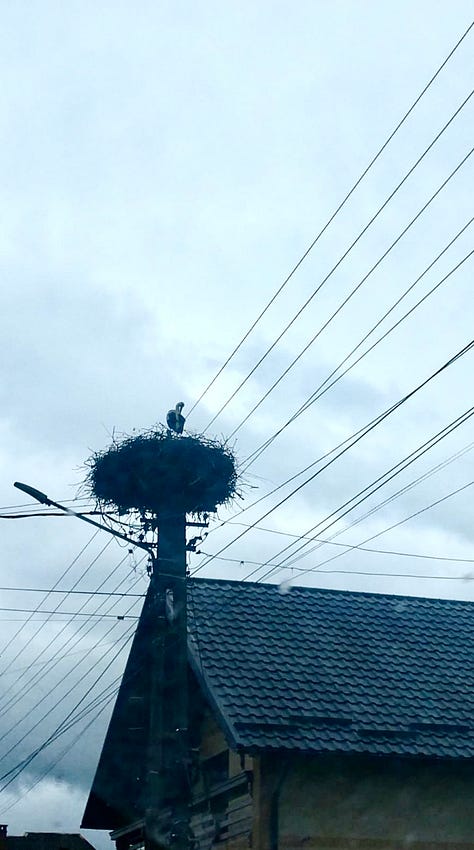
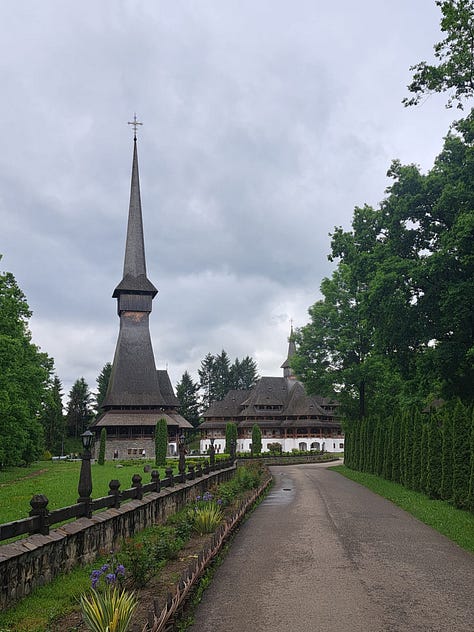
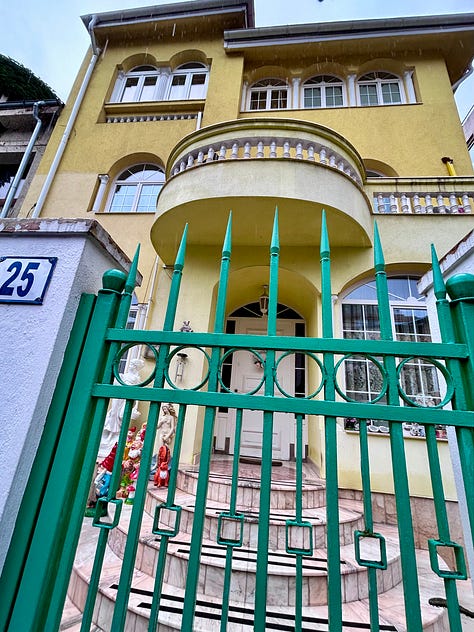
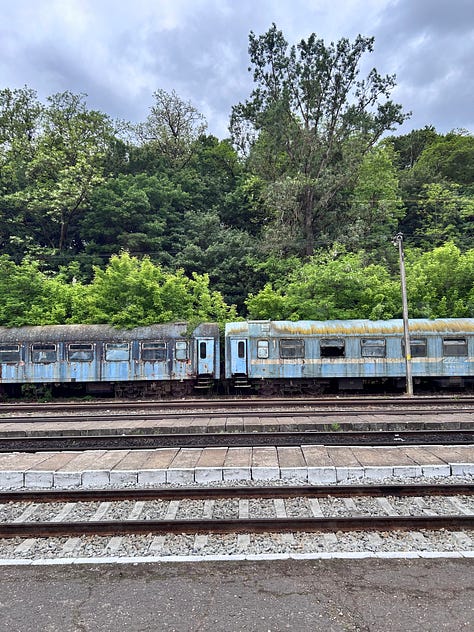
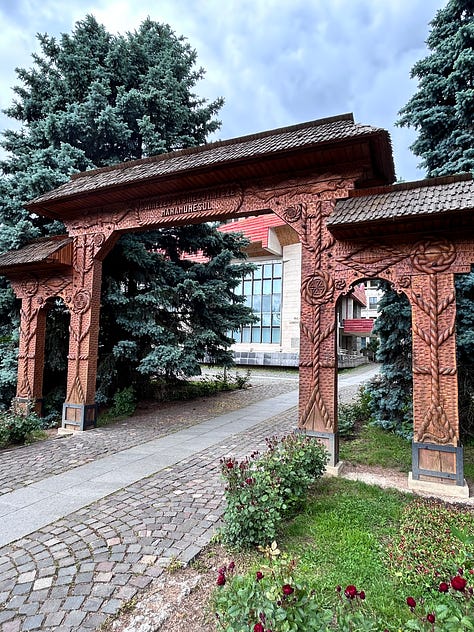
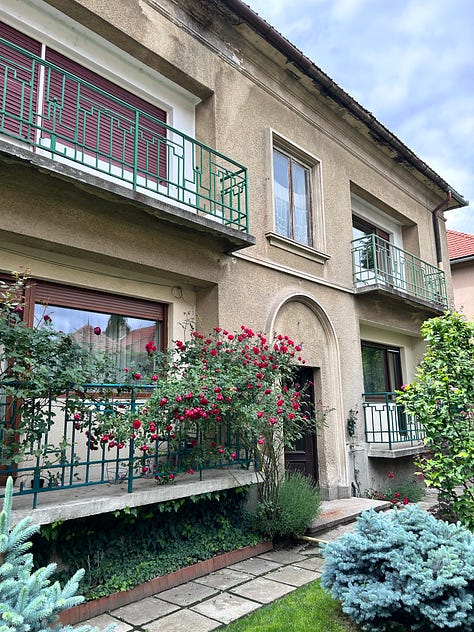
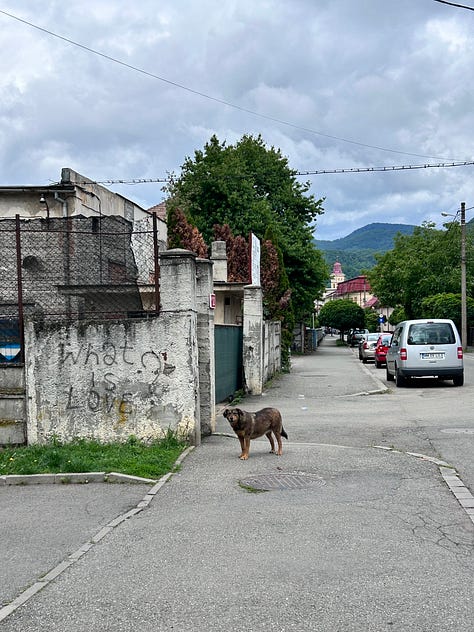
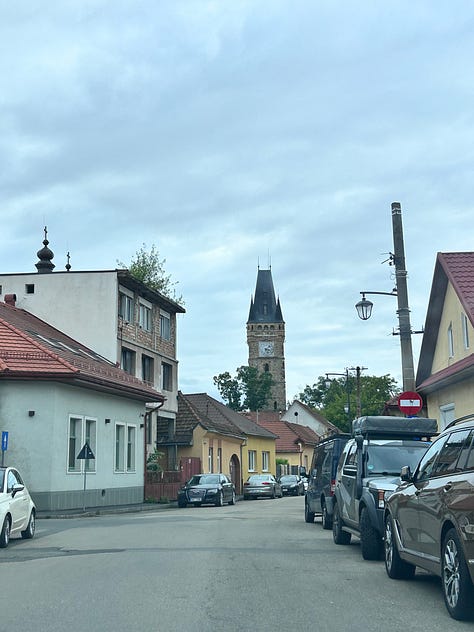
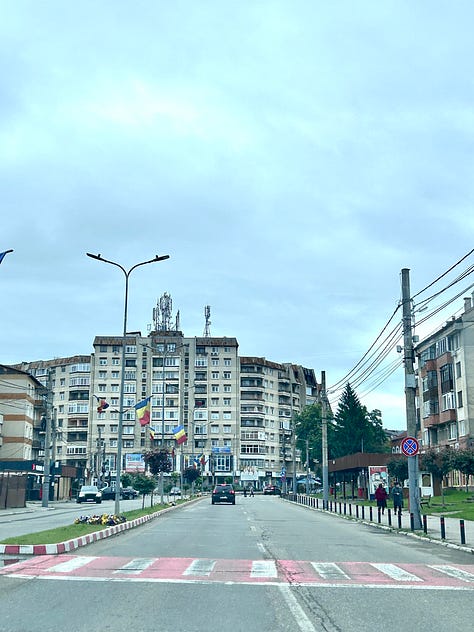
LESSON #1: Thrive for better Work-Life Balance.
In fall I did not anticipate 157 students, let alone 175 in Spring. In grad school, I taught two university courses a semester with a total of 50 students and dedicated 20-40 hours a week to those classes. Before moving to Romania, the Fulbright website said that the fellowship required an average of 18 hours a week, four of those hours dedicated to office hours or other university activities like conferences and lectures. (Romanian Universities don’t do Office Hours, so conferences, workshops, and lectures it was). In addition to teaching, I did extra activities AND taught enough that in second semester, during grading weeks, I was averaging 35+ hours a week, just on preparing for workshops and giving feedback to my students alone, never mind those conferences, workshops, and lectures I prepared to present at my and other Romanian universities.
Other Fulbrighters in my cohort taught between 1 and 4 classes, sometimes co-teaching with professors, other times creating their own classes just like me. Some taught classes that met every week, some every other; some taught less, but volunteered more, some did more travel or were able to be involved with the community. Every single one of us had different expectations set forth by our universities and taught a variety of different subjects. It was amazing to me how different some of our classes were to each other. Some of us had amazing work-life balance. Others of us, including me, not so much.
By the end of fall semester I knew I needed to rethink and restructure how I planned my course for spring, as I was burnt out from the semester and from applying for school (which didn’t end up panning out anyways). I had traveled over winter break, and when I returned, I was sick and had only one week to finish planning my Spring courses. (Honestly, when I arrived in the fall, I’d had only a three-day weekend between me and the start of my classes, so one week had felt doable at the time). My students wanted to continue the creative writing we began together in the fall—and as someone who practices student-led pedagogy, I felt obligated to cater to my student’s needs. So Creative Writing it was, even though I had already learned how much work went into it in the fall, I somehow convinced myself I could do it again, or that, at the very least, I’d have a better balance this time. I did not.
I have no excuse. I could blame the cold and the fogged-up brain or my ambition, but the truth is that teaching IS learning, and now—having renewed my Fulbright grant for a second year—I know what to do differently to make my approach and pedagogical goals more successful, and more importantly, sustainable, for the ‘25-26 school year.
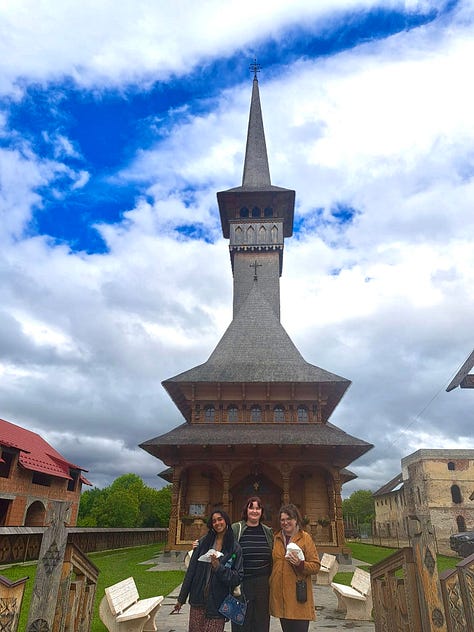
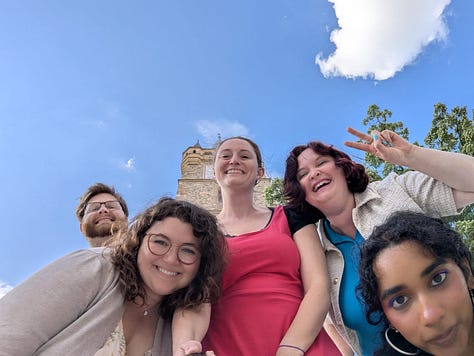
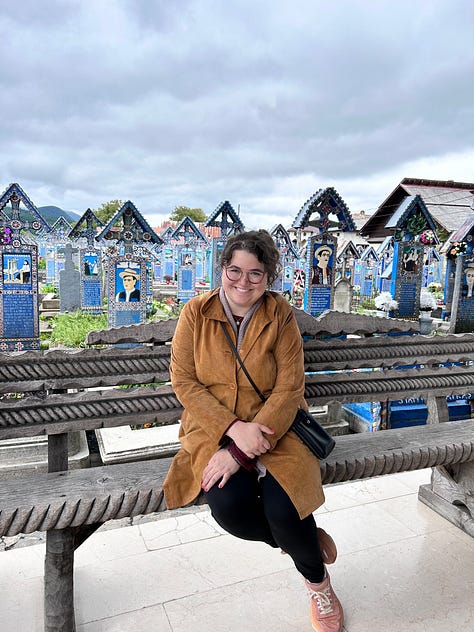
Based on the feedback I received from my students, I KNOW my classes were successful. I fulfilled most, if not all the learning goals I’d set out for my class, and many of my students are now working on novels and poetry collections of their own, hoping to continue to hone their craft in both Romanian and English, and to see where that might take their career. It makes my heart sing with joy and makes all the extra hours’ worth it when students reach out to me and thank me for the feedback I left on their stories, to reflect on how they’ve grown over the two semesters, and to hear in their voice a burst of confidence and excitement as we chat together in English, something many of them were nervous about when we began our classes together in the fall.
LESSON #2: Teach something else.
My students are beyond smart; many of them are fluent in at least 2-3 languages, and it came as no surprise when they took up the challenge of writing stories seriously, and I am more than excited to see what they bring to my classes next year.
But I will not be teaching Creative Writing classes. I learned my lesson, as much fun as it was. I will, however, dedicate myself to making a functioning CW club that can continue and thrive after I leave. But, given the restrictions of the 7-class semester and the amount of students I am expected to teach, I cannot logistically continue on the same path I’d set out for myself. I must leave room for me to grow too, not just my students. I will most likely be teaching an American Literature and Culture course and/or an Introduction to American Feminism course, as my students seemed the most interested in learning about those two things (I gave them options haha). I will also plan my course more accordingly to those 7 classes, using backwards planning method to ensure that I narrow down my goals to a reasonable amount to accomplish both what my students want to learn and what Fulbright and the University want me to too.
I love teaching Creative Writing. I had the first inclination for it when I served as co-president of the Creative Writing Club at my undergraduate university. I decided I loved it even more when I taught my first workshop at the Art Garage, and then again when I was in grad school and founded the Graduate Creative Writing in the Community program at the local YWCA, where graduate students would have the opportunity to teach writing workshops to unhoused women and people recovering from domestic abuse. After I graduated, I taught my first 8-week creative writing fiction course at Cornerstone Center for the Arts. With Fulbright, I’ve now taught 10 creative writing classes at the university level, which is beyond crazy to me.
I have no idea yet what I’ll do with my life after my second year in Romania, but I’m pretty sure teaching won’t go away anytime soon. Either way, no matter what I teach next year, I know I will continue to encourage my students to write and take creative risks. Hopefully, I’ll have a bit more time for my own writing too.


They are lucky to have you back for another year!
Every class & year teaches us something wild! Enjoyed seeing your process & excited for the new year!! Yay for Romania revival :))